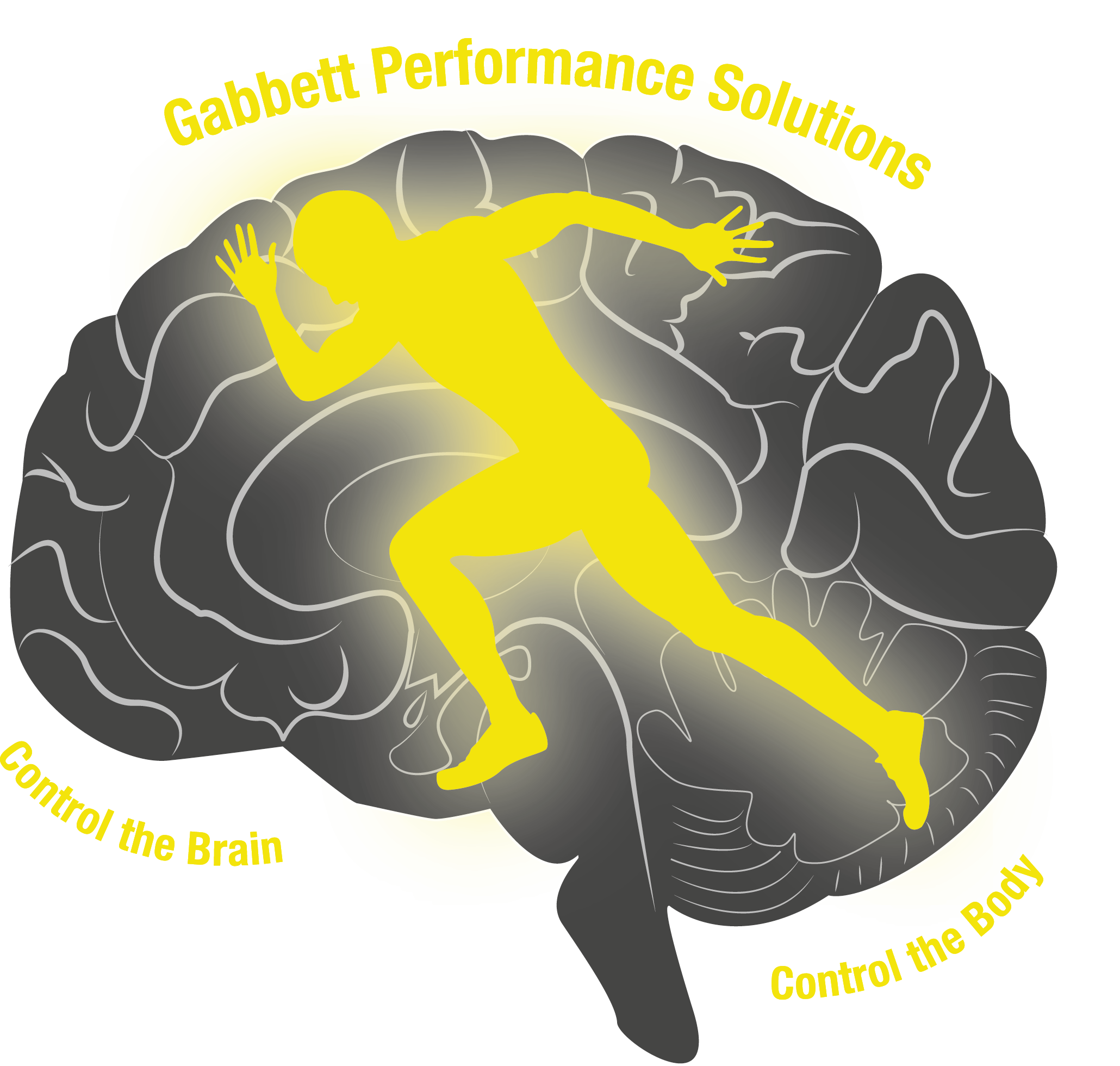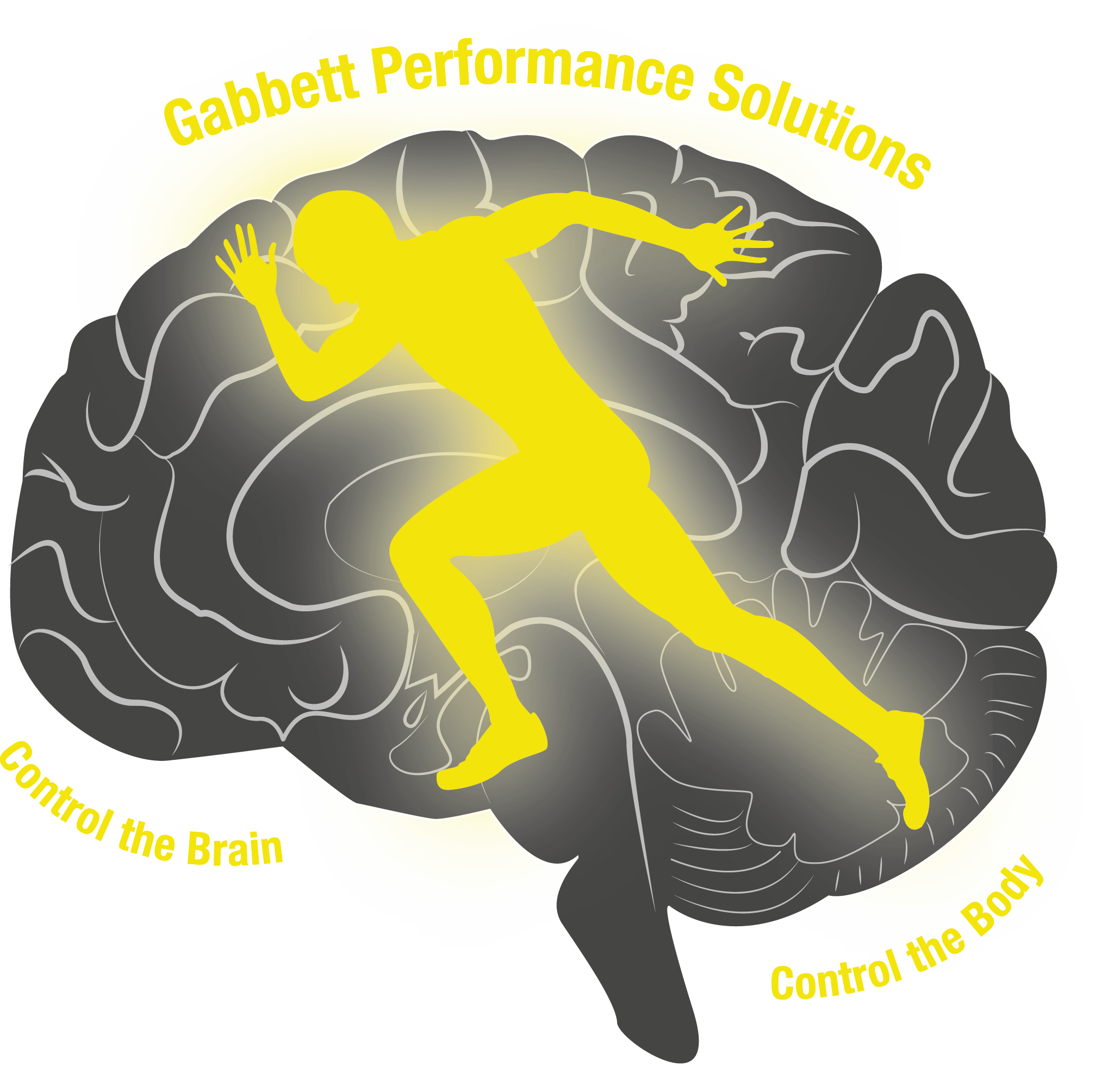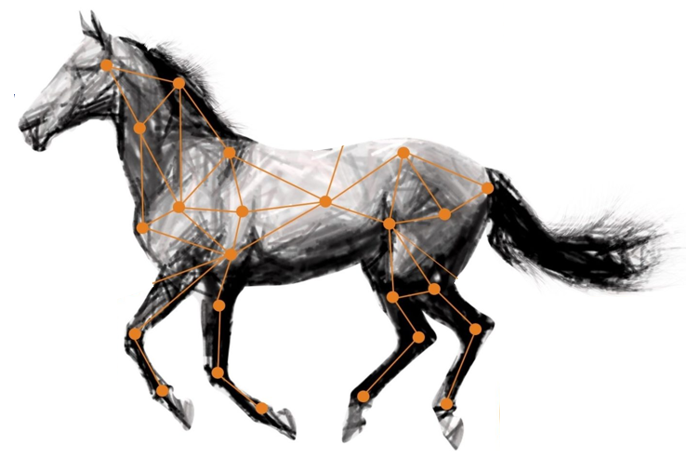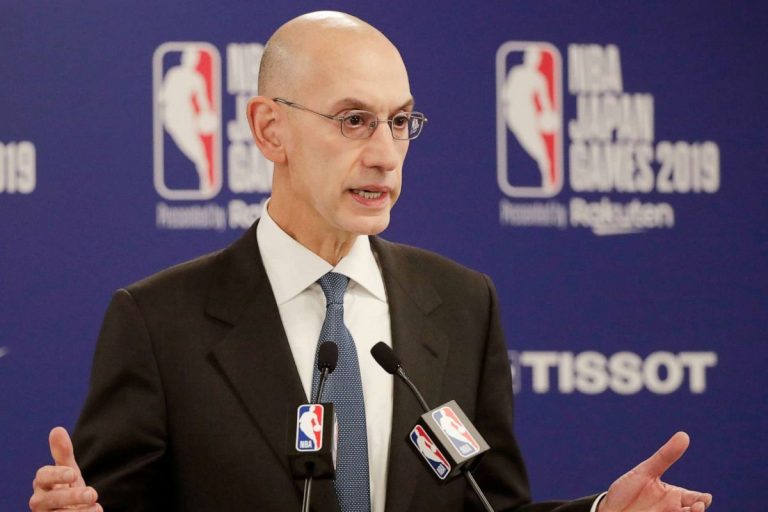Musculoskeletal injury in racehorses is common, with the prevalence of catastrophic musculoskeletal injury in the range of ~1-2% (10). Approximately 83% of Thoroughbred fatalities in California were attributable to musculoskeletal injuries, with most (85%) the result of skeletal fracture (7). With the welfare of these athletes firmly in the spotlight, the horse racing industry is now investigating ways to maintain the enjoyment of the sport while also safely guiding racehorses to peak performance. High-performance equine trainers are now applying well-established training principles that have been used successfully in human athletes, to bring their horses safely to peak performance.
Obvious differences aside, the literature associating training load and injury in human athletes and high-performance horses, is remarkably similar. It follows that human principles of training (e.g. progressive overload, specificity, individuality, reversibility, variation and recovery) will also hold true for horses.
1. Niggles Matter for Humans and Horses
For many years, when human athletes had minor musculoskeletal complaints (i.e. “niggles”), it was generally considered they could – and should – continue training. However, it was recently shown that minor complaints experienced by athletes were associated with deleterious effects on participation, performance, and training volume. These minor complaints were also associated with a greater severity of future complaints (14). Similar findings have been documented in high performance horses, with researchers demonstrating that horses with mild injury were significantly more likely to experience a major musculoskeletal injury (Figure 1) (5).
Advice for Horse Trainers: Monitor the training response of your horse and pay attention to signs of training maladaptation (e.g. loss of appetite, poor social interaction with other horses, movement abnormalities, soreness, willingness to work).
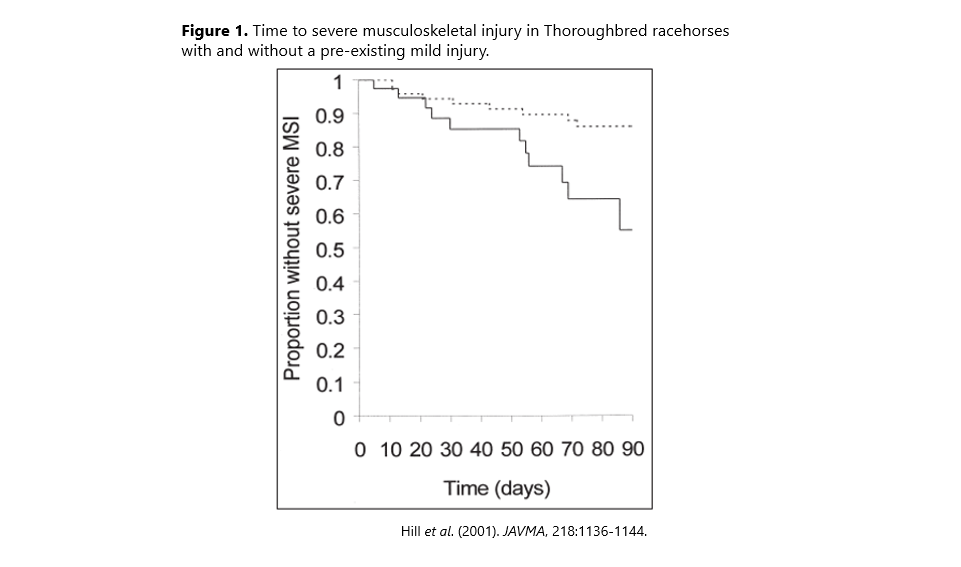
2. Rapid Changes in Training Load Are Problematic
When a tissue is exposed to a load that far exceeds its capacity to adapt, or when training load is progressed rapidly (4), injury risk increases. This finding, which has been extensively documented in humans, has also been observed in high performance horses. Munsters et al. (12) demonstrated that rapid changes in training load relative to capacity, increased the risk of injury in eventing horses. Antenhill et al. (1) also showed that thoroughbred racehorses that died due to musculoskeletal injury accumulated greater distance in the 12 months before death, than horses that died without musculoskeletal injury (Figure 2).
Advice for Horse Trainers: Progress training gradually, particularly upon return from lay-up. Small week-to-week changes in training load are associated with lower injury risk and better readiness to perform.
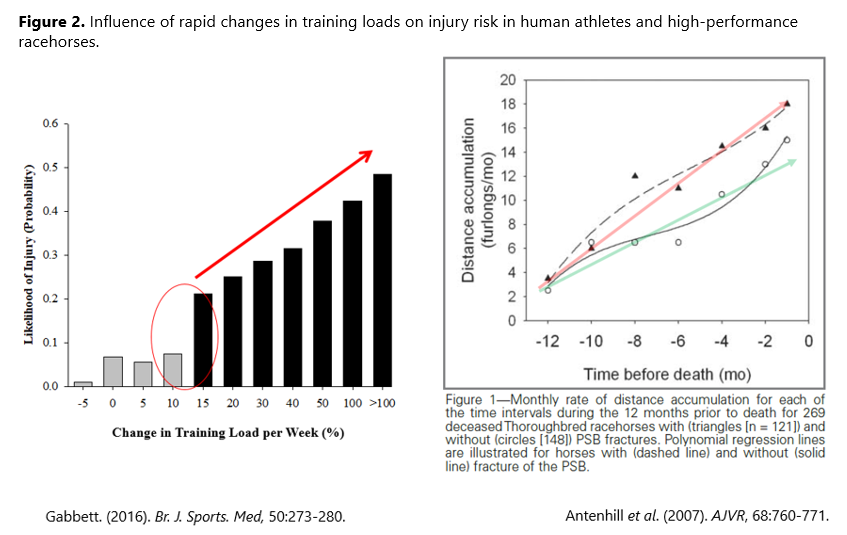
3. High-Intensity Exercise Increases (and Decreases) Risk
In human athletes, a “U”-shaped relationship exists between the number of sprint exposures and injury risk (10). These findings suggest that both overtraining and undertraining increases injury risk. Similarly, while greater distances accumulated at high speeds over the previous 30 and 60 days were associated with greater injury risk, these high-speed distances were also associated with reduced injury risk (Figure 3) (6). Average galloping distances of 80 metres per session have been shown to elicit positive bone adaptation (2), while as little as ~120 metres per session (~0.6 furlongs per day, on average) over a 2-month period, was associated with a 1.8-fold higher risk of fatal skeletal injury (3).
Advice for Horse Trainers: Exposing horses to small volumes of galloping speeds is critical for bone health – nothing prepares the bone for galloping, like galloping! However, the ability of bone to adapt switches off quickly (within 20 strides), at which time the bone then becomes vulnerable to micro-cracks (which can lead to full fractures if inadequate recovery is provided).

4. Early Exposure to Dynamic Loading During Development Optimizes Skeletal Maturity
It is well documented that weight-bearing physical activity during childhood and early puberty has a positive, and possibly enduring effect on bone strength (9). This early loading may elicit adaptations that prevent loss of bone mineral density later in life. Equally, the bones of young horses are most responsive to stimuli up to 2 years of age. Exposing young horses to dynamic loading during development could optimize the skeleton through maturity, leading to a lower chance of musculoskeletal injury (8). Studies have shown that foals can travel as much as 10 km per day within 9 days of birth (14). While structured training is not necessarily recommended, the loading that occurs as a result of “free play” should be encouraged.
Advice for Horse Trainers: Early loading, through free play can encourage positive bone adaptation, which in turn may decrease risk of musculoskeletal injury as an older competitive horse.
5. Well-Designed Training Programs Promote Positive Adaptations and Good Performance
Both low and high galloping volumes can increase the risk of injury, but greater time between rest periods can also increase injury risk (6). Furthermore, training programs incorporating moderate galloping distances and adequate rest between starts were associated with a higher rate of wins and places and prizemoney per start (12). Collectively, these findings suggest that a well-designed, periodized training program that incorporates adequate rest may reduce injury risk and result in better performance.
Advice for Horse Trainers: Strategically plan recovery periods between “high stress” galloping sessions. Training provides the stimulus, but it’s in the recovery period where adaptation occurs.
References
1. Antenhill LA, et al. (2017). Risk factors for proximal sesamoid bone fractures associated with exercise history and horseshoe characteristics in Thoroughbred racehorses. AJVR, 68:760-771.
2. Day L. (2014). Adaptation and conditioning of the musculoskeletal system. https://canadianthoroughbred.com/magazine/health/adaptation-and-conditioning-of-the-musculoskeletal-system/ 2-12.
3. Estberg L, et al. (1996). High-speed exercise history and catastrophic racing fracture in Thoroughbreds. AJVR, 57:1549-1555.
4. Gabbett TJ. (2016). The training—injury prevention paradox: should athletes be training smarter and harder? Br J Sports Med, 50:273-280.
5. Hill AE, et al. (2001). Risk factors for and outcomes of noncatastrophic suspensory apparatus injury in Thoroughbred racehorses. JAVMA, 218:1136-1144.
6. Hitchens PL, et al. (2019). Meta-analysis of risk factors for racehorse catastrophic musculoskeletal injury in flat racing. Vet J, 245:29-40.
7. Johnson BJ, et al. (1994). Causes of death in racehorses over a 2 year period. Equine Vet J, 26:327-330.
8. Logan AA and Nielsen BD. (2021). Training young horses: the science behind the benefits. Animals, 11, 463. https://doi.org/10.3390/ani11020463.
9. MacKelvie KJ, et al. (2002). Is there a critical period for bone response to weight-bearing exercise in children and adolescents? A systematic review. Br J Sports Med, 36:250-257.
10. Maeda Y, et al. (2016). Epidemiology of racing injuries in Thoroughbred racehorses with special reference to bone fractures: Japanese experience from the 1980s to 2000s. J Equine Sci, 2016:27:81-97.
11. Malone S, et al. (2017). High chronic training loads and exposure to bouts of maximal velocity running reduce injury risk in elite Gaelic football. J Sci Med Sport, 20:250-254.
12. Morrice-West AV, et al. (2021). Association of thoroughbred racehorse workloads and rest practices with trainer success. Animals, 11, 3130. https://doi.org/10.3390/ani11113130
13. Munsters CCBM, et al. (2020). A prospective cohort study on the acute:chronic workload ratio is relation to injuries in high level eventing horses: a comprehensive 3-year study. Prev Vet Med, 179: :105010. doi: 10.1016/j.prevetmed.2020.105010. Epub 2020 Apr 25.
14. Rogers CW, et al. (2012). Early exercise in the horse. J Vet Behav, 7:375-379.
15. Whalan M, et al. (2019). Do niggles matter? – Increased injury risk following physical complaints in football (soccer). Sci Med Football, doi: 10.1080/24733938.2019.1705996
